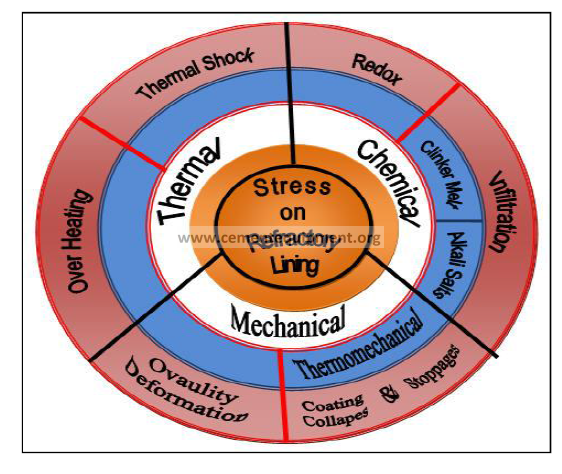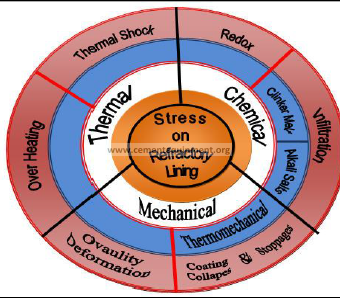Contents
Rotary Kiln Refractory
Preventative Care

[wpecpp name=”package + Updates forever” price=”250″ align=”center”]
Protecting the life of your refractory is crucial not only to running at high efficiency, but also to
maintaining your rotary kiln. Once your rotary kiln refractory is installed and in use, it is important to
take the extra steps to protect it. A well-installed, high quality refractory can have a lifespan of
many years. But there are several culprits that can cut refractory life short. Unfortunately, aside
from a refractory, refractory failure is hard to spot. The good news is, many of the things that can
cause refractory failure are preventable.
The biggest source of refractory failure is what is called “cycling.” Cycling is simply the heating up
and cooling down of a rotary kiln. Each time the rotary kiln is heated, the refractory expands with
the drum. As the rotary kiln is cooled, the refractory also retracts. If a kiln is constantly being turned
on and shut down, the refractory can easily be stressed, causing cracks. Cracks can also occur
from heating or cooling the kiln too quickly. It is important to try to reduce cycling as much as
possible, keeping shut downs to a minimum.
Another source of refractory failure is chemical incompatibility. Refractory is not designed to be
able to withstand certain chemicals. A big offender of this is chlorides. Chlorides can aggressively
attack refractory, causing excessive wear because of their corrosive nature. When these
chemicals are identified up front, refractory can be designed to handle such aggressive corrosion.
Similarly, this failure can also happen when a rotary kiln is used for something the refractory was
not designed for. Sometimes there are unknown components in a material, and when a feedstock
is changed, these unknown components can attack the refractory, again, causing excessive wear.
Aside from regular inspections, one easy way to help extend the life of your rotary kiln is to check
for hotspots on a regular basis. This can be done by picking a spot on the rotary kiln shell, and
holding a temp gun in place. As the rotary kiln rotates, that spot should be the same temperature
for the entire circumference of the shell. There would be trouble if you’re reading 400º, 400º, 700º,
400º. A hotspot on the shell of the rotary kiln indicates a failure in refractory. Left unnoticed, this
could lead to severe damage to the rotary kiln shell. In addition to circumference temperature
being the same in a given location, there should be a gradual shift in temperatures from one end of
the kiln to the other, not a drastic change.
